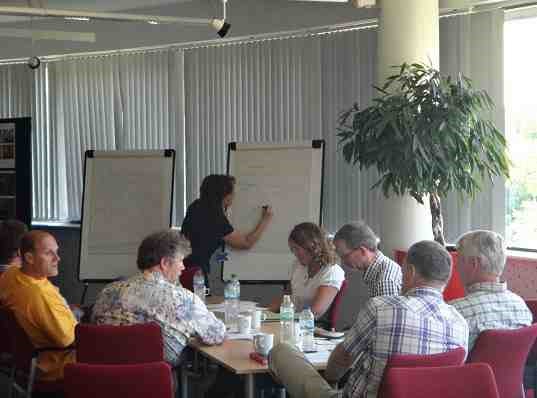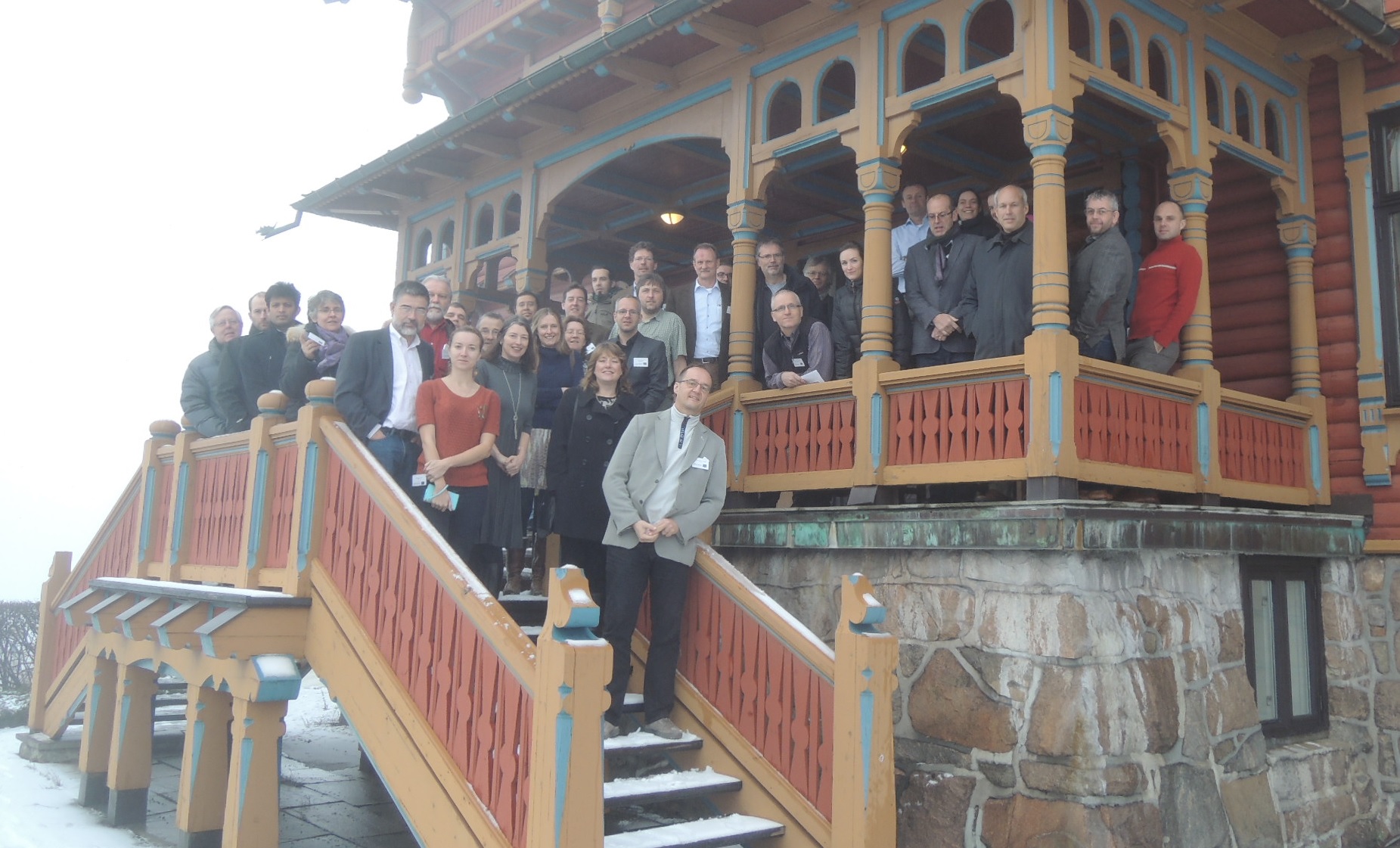WP 9 Dissemination, Dialogue with Stakeholders and Exploitation
|
WP9 Objectives
• Facilitate dissemination, dialogue and exploitation, transmitting the results of NanoRem widely amongst user communities.
• Support dialogue to collect “soft” information from a broad range of stakeholders internationally.
• Provide a risk-benefit based identification of key exploitation opportunities. |
Dissemination
Communication is key for the exploitation of the results of NanoRem. WP 9 has developed a communication plan to provide a framework for dissemination across the project. Key dissemination tasks are: i) Dissemination management; ii) Dissemination support services; iii) Central project publicity and content management services; iv) Project web site; v) Leveraging dissemination opportunities (i.e. identification of and linkage with existing “high value but low cost” dissemination and dialogue opportunities); and vi) Training recommendations.
Dissemination of NanoRem findings has already been undertaken in multiple ways, including:
- Website development – the NanoRem website has been developed to provide a project overview, as well as news and updates on the project. The website contains “Information for Decision Makers” pages, developed to convey key information on nanoremediation to regulators and other stakeholders. These include a “frequently asked questions (FAQ)” area and a series of "Thematic Pages" providing more detailed information.
- Journal articles – various NanoRem outcomes have been developed into published scientific papers, including one based on WP9’s nanoremediation risk-benefit appraisal work: Bardos et al. (2015). WP9 are currently developing a second journal paper based on the risk-benefit appraisal work.
- Publications catalogue – a publications catalogue has been designed for the project to provide an overview of outputs. It will be added to the project website and includes Intranet and Extranet components, showing content for internal and external dissemination respectively.
Dissemination will continue to take place throughout the project via routes including: further scientific publications, continued development of the NanoRem website, social networking and also via the major international stakeholder networks involved in contaminated land management across Europe (COMMON FORUM and NICOLE).
Dialogue
Dialogue with stakeholders (industry, service providers and regulators) is essential to ensure the relevance and success of NanoRem outputs. The information collected will be related to policy and regulation; risk management and risk perception; ethical concerns; sustainability assessment; market evaluations; and any other key stakeholder concerns. The goals of this effort are: (a) to ensure that WPs 2 to 7 are informed of considerations that might have a bearing on the choices they make during research within the project, (b) to provide an informed basis for exploitation, and (c) to provide an informed interim view of nanoparticle deployment risks from previous field trials to support the design of field-scale applications in WP 10.
Dialogue has been initiated in the project via remote consultation (including surveys and consultation), key informant interviews, focus groups and structured workshops. Two project-orientated elicitation workshops have been held by NanoRem to provide specific and usable information for risk assessment policy, market analysis, legal/ethical aspects, and societal acceptance:
- Pre-deployment Risk Assessment Workshop – July 2013, Nottingham, UK. Internal NanoRem partners and fitting external delegates were invited to discuss the fate, transport and toxicity of the NanoRem nanoparticles. The outcomes of this workshop were used to develop a pre deployment risk assessment protocol for the use of NPs in WP10 field trial sites to evaluate the risk posed by NP deployment and demonstrate to regulators that the trials would be safe (see Thematic Page 9).
- Sustainability and Markets Workshop – December 2014, Oslo, Norway. Expert and professional stakeholders, including both NanoRem representatives and external participants, were consulted regarding sustainability issues and market opportunities for nanoremediation. The aim of the workshop was to build a cross-sectorial view of available markets and key sustainability issues as well as ethical concerns related to nanoremediation across a range of stakeholder opinions. The workshop was split into three sessions: market opportunities; generic sustainability issues; and a hypothetical sustainability case study. The results of the workshop have been used to inform market development analysis (link to NanoRem Internal Deliverable 9.4 to follow) and will be used to frame how retrospective sustainability assessments will be carried out for NanoRem field trial sites (links to NanoRem Internal Deliverable 9.3 and Deliverable 9.1 to follow).


Photo 1: Summer 2013 Expert Elicitation Workshop facilitated by NanoRem partner Land Quality Management Ltd (© Land Quality Management 2013)

Photo 2: December 2014 – Participants of the NanoRem Oslo Sustainability and Markets Workshop (Photograph taken by Hans-Peter Koschitzky)
Dialogue will continue over the remainder of the project, with further consultation meetings, online consultation and dialogue with the key stakeholder network. Furthermore, in order to disseminate the harmonisation efforts and to align standards within the project and existing ones outside the project, project liaison with CEN has been initiated. NanoRem will take part in CEN/TC 352 "Nanotechnologies". The current status is that the official acceptance of NanoRem by CEN is pending. Norbert Klaas is designated as the representative of NanoRem.
Exploitation
Exploitation includes two tasks: i) benefits assessment and exploitation strategy; and ii) risk-benefit appraisal and developing a market consensus. Successful exploitation of nanoremediation technology will only happen if there is a broad market consensus (across site managers, users, regulators and other stakeholders) that the benefits of nanoparticle use in remediation far outweigh their risks. The second task seeks to develop a European consensus on nanoremediation risks and benefits with the COMMON FORUM, NICOLE and other interested stakeholders.
In Years 1 and 2 of the project, WP9’s work on opportunities for exploitation has focussed on the “value proposition” (the overall promise of value to be delivered) for iron nanoparticles and has been investigated in the context of a risk-benefit appraisal, based on dialogue with key practitioner and stakeholder interests from across the EU and market assessment activities. Risk-benefit appraisal work and stakeholder consultation have been incorporated into scenario analysis in an attempt to better understand the drivers for the development of a nanoremediation market. Market status quo was also established for nZVI. A SWOT (strengths, weaknesses, opportunities and threats) analysis was then undertaken for the nanoremediation market and the future development of SWOT factors were considered. The SWOT analysis and future developments were used to draw initial conclusions on the broad actions required to support nanoremediation market exploitation (report links to follow).
Going forward, risk-benefit appraisal work will continue and risks and sustainability considerations (including life cycle considerations) will inform the exploitation strategy developed. However, WP9 exploitation work will not develop specific business plans for NanoRem products, as this is better achieved by the individual producer partners. As NanoRem technical findings become available, the broad exploitation strategy will be developed further in continued consultation and dialogue with external stakeholders to provide a substantive opinion on risk-benefit appraisal and nanoremediation exploitation at a European level.
Thus far, the majority of WP9 work has focussed on nZVI, as the most commonly used nanoparticle in remediation. However, future WP9 work will look to use dialogue to incorporate other particle types into its outputs, exploitation and dissemination work.
|
|
|
|